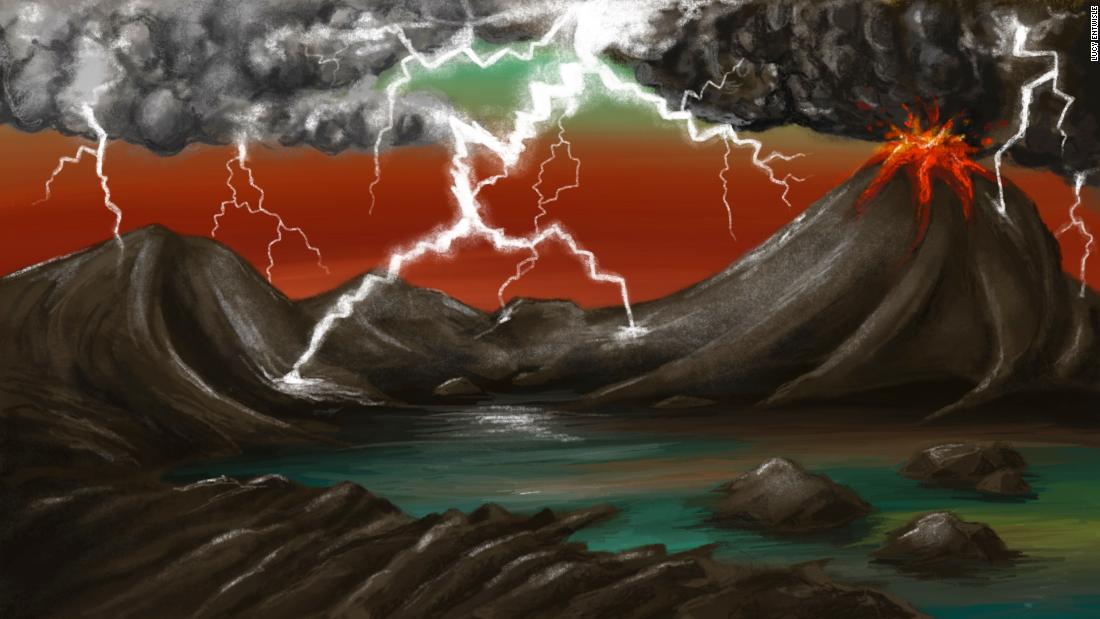
One of the key ingredients needed for life as we know it is phosphorus – and the multitude of lightning strikes that occurred when Earth was young 4 billion years ago may have released the necessary amount of phosphorus to form the foundation for life. lay.
Phosphorus is needed in the molecules that make up basic cell structures and cell membranes and even make up the phosphate backbone of DNA and RNA, said Benjamin Hess, study author and graduate student at Yale University in The Department of Earth & Planetary Sciences.
But this element was elusive on the early Earth, trapped in minerals.
“Most of the early Earth’s phosphorus was trapped in minerals that are essentially insoluble and non-reactive, meaning they cannot be used to make biomolecules necessary for life,” said Hess. “Lightning strikes provide a new mechanism for creating phosphorus in a form that can make important connections for life.”
Meteorites have long been thought to provide the necessary elements for life to appear on Earth. Meteorites are known to contain schreibersite, a phosphoric mineral that can be dissolved in water. If enough of them had crashed into the earth, that schreibersite could have provided the right amount of phosphorus.
However, life began between 3.5 and 4.5 billion years ago, when fewer meteorites affected Earth.
Schreibersite has another source in glasses called fulgurite, also known as the glass that forms when lightning strikes the ground.
Fulgurite has been found to contain phosphorus released from surface rocks – and it is soluble.
“Lightning is a mechanism that doesn’t necessarily diminish over time, as the generally accepted source, meteorites, do,” added Hess. “This mechanism could be very important for considering the formation of life on Earth-like planets after meteorite impacts become rare.”
Lightning has also been a topic of interest to scientists when considering life on the early Earth, as it leads to the formation of gases such as nitrogen oxides, which also played a role in the origin of life.
Hess and his fellow researchers used this existing research to investigate and refine the speed of lightning on the early Earth.
On Earth today, we experience about 560 million lightning flashes per year. On the early Earth, that number was anywhere from 1 to 5 billion per year, of which 100 million to 1 billion hit the ground.
That could have resulted in 1 trillion lightning strikes – and a lot of phosphorus in more than a billion years.
Lightning was more common on the early Earth because there was more carbon dioxide in the atmosphere. Carbon dioxide contributes to Earth’s temperature, and a higher temperature on Earth causes more frequent and intense thunderstorms, Hess said.
Carbon dioxide levels had increased on early Earth after an object the size of Mars was smashed into Earth to create the Moon 4.5 billion years ago. This also released many gases from the Earth, such as carbon dioxide – which then became trapped in Earth’s atmosphere and led to more lightning, Hess said.
“Our proposal of lightning strikes as an important mechanism for creating reactive phosphorus is important to our understanding of the origin of life because lightning strikes are relatively constant over time,” said Hess.
Understanding the role of lightning strikes as a way to create useful phosphorus has implications for the search for life beyond Earth.
“Our findings are likely to apply to any planet with an atmosphere that generates lightning. As long as a planet has a significant amount of lightning, there would be a source of phosphorus needed for life to form,” said Hess.


